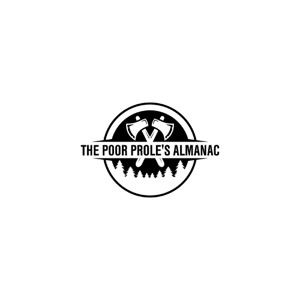Multi-species Grazing Systems in Silvopasture
The Poor Prole’s Almanac - A podcast by The Poor Prole’s Alamanac, Bleav

Categories:
This episode of "The Poor Proles Almanac" explores the concept of multi-species grazing within a silvopasture system. Building on previous discussions about the benefits of silvopasture, hosts Andy and Elliott discuss how incorporating a diverse array of grazing animals can enhance nutrient cycling, improve pasture health, and increase overall productivity. They introduce a specific order of animal rotation based on the animals' dietary preferences and foraging habits. Optimizing Grazing Patterns: The Leader-Follower System The hosts explain the "leader-follower" grazing system, where different animal species are introduced to the pasture in a specific sequence to maximize the utilization of available forage. The order typically starts with cows, which are more selective grazers and prefer grasses. Pigs follow, rooting for grubs, insects, and leftover fruits and nuts. Turkeys come next, consuming insects and large seeds, followed by sheep, which graze on broadleaf plants and weeds. Chickens then scratch through the remaining material, cleaning up manure and insects. This sequential grazing pattern ensures that each animal has access to its preferred food sources while preventing overgrazing of any particular plant species. The suggested order of grazing rotation is as follows: Cows: Primarily graze grasses. Pigs: Omnivorous, consuming grubs, roots, fruits, nuts, and even small animals. Turkeys: Focus on large seeds, insects, and leftover fruits and nuts. Sheep: Graze on broadleaf plants and weeds. Chickens: Scratch through manure and debris, consuming insects and leftover seeds. Goats: A Special Case The hosts highlight goats as a unique case. While goats are known for their ability to thrive on a wide range of forage, including undesirable plants, the hosts caution against incorporating them into a developing silvopasture system. Goats' indiscriminate browsing habits can pose a risk to young trees and other sensitive plants, potentially hindering the establishment of a diverse and balanced ecosystem. They suggest that goats are better suited for mature systems where the desired plants are well-established. Addressing Parasite Management The episode also addresses the importance of parasite management in multi-species grazing systems. The hosts explain that certain animals, such as sheep and goats, as well as pigs and chickens, share similar internal parasites. Rotating these species through the pasture in close succession can increase the risk of parasite transmission and outbreaks. To mitigate this, the hosts recommend introducing a "species break," allowing sufficient time between rotations to disrupt the parasite life cycle. They also suggest incorporating plants with known anti-parasitic properties into the pasture mix, such as wormwood, sage, garlic, fennel, and certain tree leaves. The Importance of Planning and Flexibility The hosts emphasize that implementing a multi-species grazing system requires careful planning and a willingness to adapt to changing conditions. Factors such as soil quality, site size, animal behavior, and available resources will all influence the design and management of the system. They advise those new to this approach to start small, gradually introducing animals and monitoring their impact on the pasture. The hosts encourage listeners to view this process as an ongoing experiment, emphasizing that mistakes are inevitable but can provide valuable learning experiences. The episode concludes by highlighting the benefits of multi-species grazing for both the land and the farmer. By mimicking natural ecological processes, this approach can enhance nutrient cycling, improve soil health, and increase overall productivity. The diverse array of animal products also provides the farmer with a greater range of income streams and a more resilient business model. For sources, transcripts, and to read more about this subject, visit: www.agroecologies.org To support this podcast, join our patreon for early, commercial-free episode access at https://www.patreon.com/poorprolesalmanac For PPA Restoration Content, visit: www.restorationagroecology.com For PPA Merch, visit: www.poorproles.com For PPA Native Plants, visit: www.nativenurseries.org To hear Tomorrow, Today, our sister podcast, visit: www.tomorrowtodaypodcast.org/
